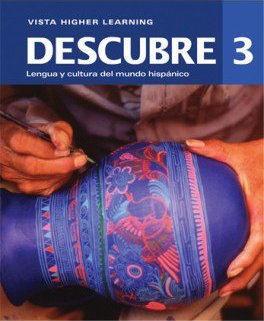
All Solutions
Page 156: Despues de leer
You could answer:
*Los personajes principales son la tía Jose y su hija.*
The main characteres are aunt Jose and her daughter.
You could answer:
*No, la llevó al hospital luego de cinco horas.*
No, she took her to the hospital after five hours.
You could answer:
*El marido confía ciegamente en la ciencia, y piensa que su esposa también debería hacerlo en vez de sufrir sin razón.*
The husband trusts the science blindly, and thinks his wife should also do it instead of suffering for no reason.
You could answer:
*Le cuenta las historias de grandes mujeres del pasado, algunas ciertas y algunas inventadas.*
She tells her stories about great women from the past, some true and some made up.
You could answer:
*Para el padre de la niña, la ciencia médica le salvó la vida, pero para la tía Jose fueron sus antepasadas.*
For the child’s father, medical science saved her life, but for aunt Jose it was her ancestors.
You could answer:
*Se eligen estos dos términos porque describen cosas que son muy grandes. Otra comparación en el cuento puede ser “aquel dolor como un acantilado”, que significa que el dolor es muy profundo.*
These terms are chosen because they describe things that are very big. Another comparison in the story can be “that pain like a cliff”, which means that the pain is really deep.
You could answer:
*Se le llama metáfora.*
It’s called a metaphor.
You could answer:
*Se refiere a la sala de emergencias.*
It means the emergency room.
You could answer:
*Generalmente los fantasmas se asocian con la oscuridad, pero estos fantasmas son las mujeres del pasado que le dan esperanza a la tía Jose, por lo tanto se asocian con al luz.*
Generally, ghosts are related to darkness, but these ghosts are the women in the past that give aunt Jose hope, therefore they are related to light.
You could answer:
*Recupera su voz cuando le cuenta las historias de sus antepasadas, porque recuperó la esperanza. La voz representa la esperanza.*
She recovers her voice when she tells her the stories of her ancestors, because she has recovered hope. Her voice represents hope.
You could answer:
*Creo que los ojos grandes simbolizan la independencia y la fuerza, que será una mujer observadora.*
I think big eyes represent independence and strength, that she will be an observant woman.
You could answer:
*Porque la tía Jose le agradece a sus antepasadas, y no están allí presentes para decírselo.*
Because aunt Jose thanks her ancestors, and they aren’t present there to say it to them.
You could answer:
*Creo que a la niña la salvaron los médicos y también la esperanza de su madre. Ambas cosas pueden combinarse. No conozco ningún caso de recuperación asombrosa en la vida real.*
I think the child was saved by the doctors and also by her mother’s hope. Both things can combine. I don’t know any cases of mirable recovery in real life.
* *Los médicos pasan años estudiando para poder salvar vidas.*
Doctors spend many years studying to be able to save lives.
* *Si la medicina no funcionara, la gente moriría todos los días, pero la mayoría de casos son exitosos.*
If medicine didn’t work, people would die every day, but most cases are successful.
* *Es un hospital prestigioso porque tiene médicos con muchos años de trayectoria.*
It’s a prestigious hospital because the doctors have many years of trajectory.
* *Si rezar no sirviera, no existiría el concepto de milagros.*
If praying didn’t work, the concept of miracles wouldn’t exist.
* *La ciencia ayuda al cuerpo, la fe ayuda al alma.*
Science helps the body, faith helps the soul.
* *Tener fe ayuda a sobrellevar la situación a las personas que están sanas y esperando.*
Having faith helps the people who are healthy and waiting live through the situation.
*Hace muchos años, una mujer llamada Elizabeth viajó en barco para Colombia desde Italia. Elizabeth se fue de su país para buscar un buen trabajo en Sudamérica. Por muchos años vivió entre muchas personas en una casa comunitaria, pero después de trabajar mucho, por fin logró construir una casa propia, grande como el barco en el que vino. Elizabeth tenía tus mismos ojos grandes y brillantes como dos faroles. Tuvo una hija, y esa hija me tuvo a mí: Elizabeth era tu bisabuela.*
Many years ago, a woman named Elizabeth travelled by boat to Colombia from Italy. Elizabeth left her country to look for a good job in South America. For many years she lived among many people in a community home, but after working a lot, she could finally build her own house, big as the ship she came in. Elizabeth had your same eyes, big and bright like two lamps. She had a daughter, and that daughter had me: Elizabeth was your great grandmother.

